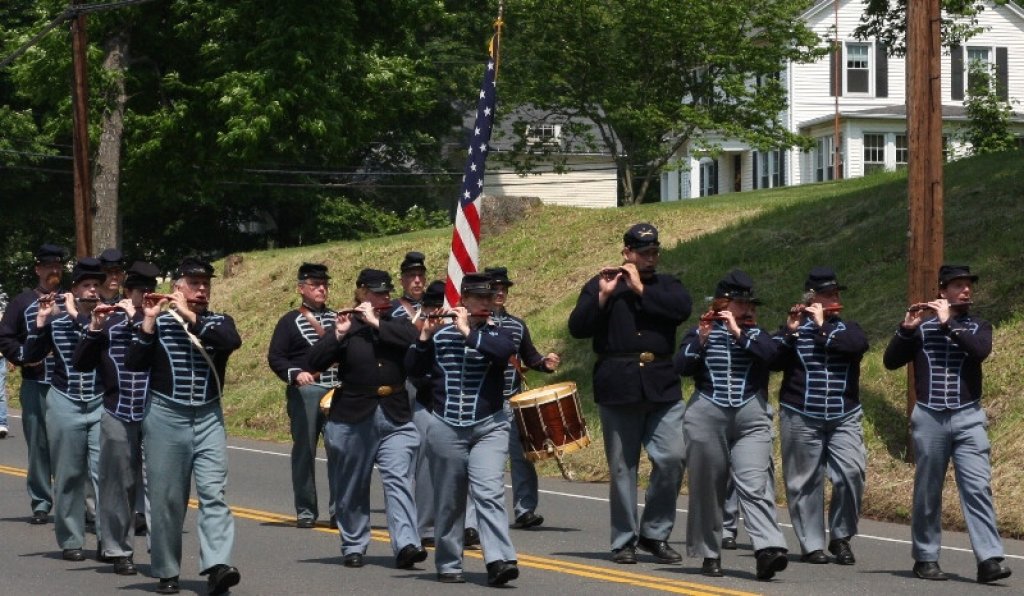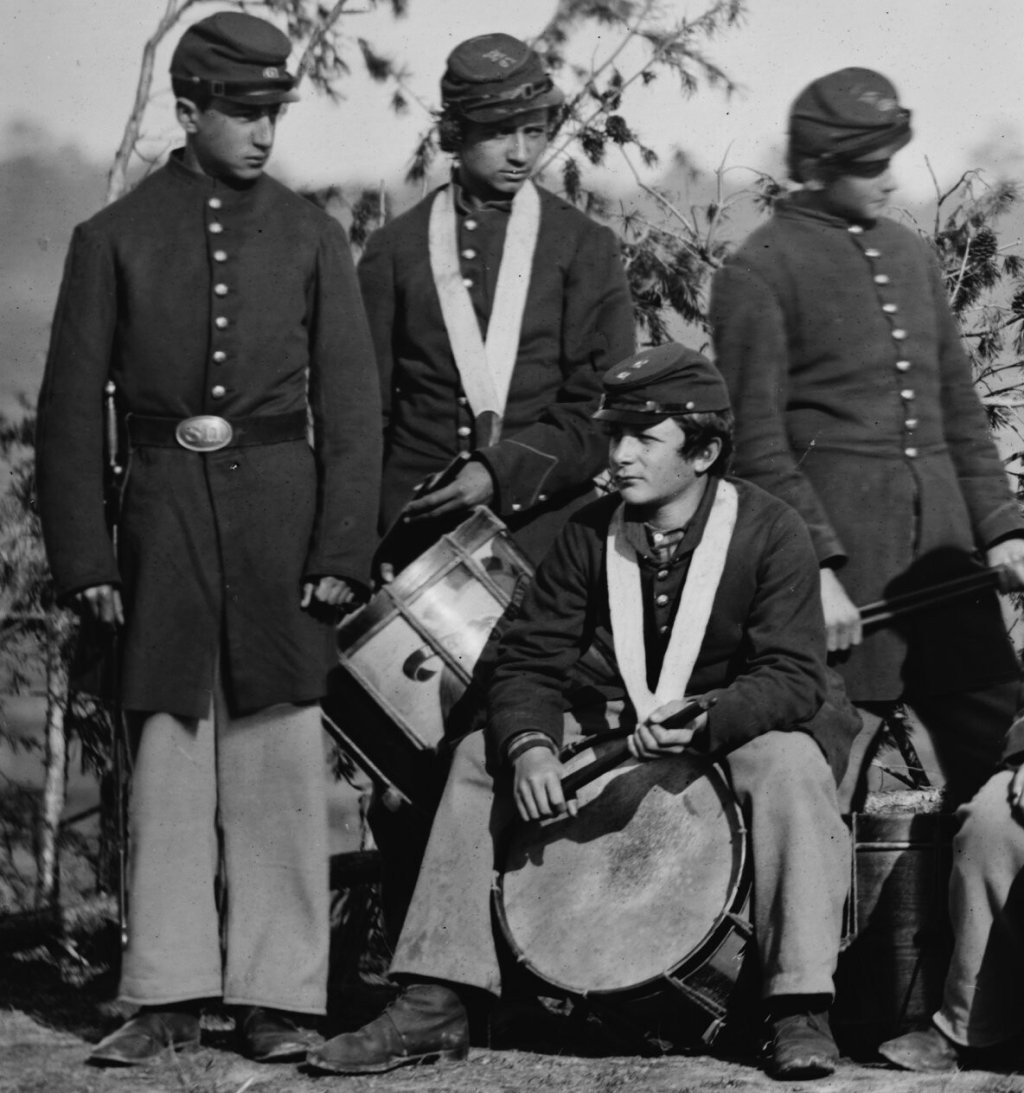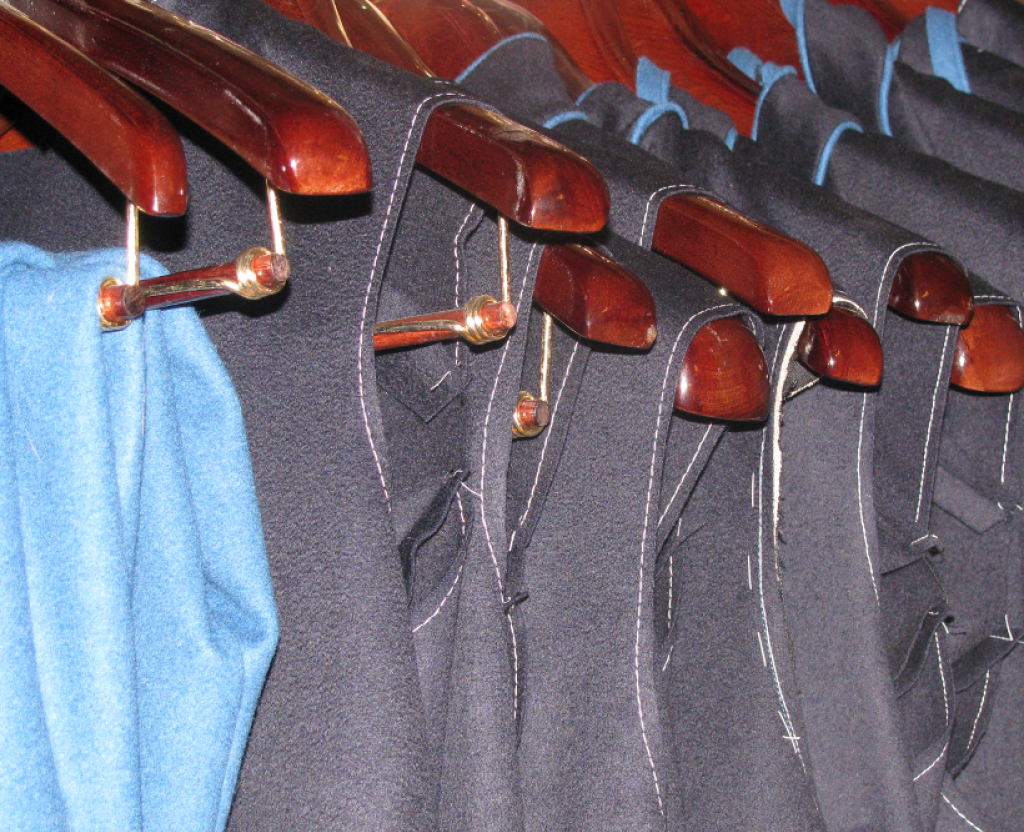Since September of last year, I’ve been working on a major project. Outfitting my fife and drum corps, Connecticut Valley Field Music, with completely new uniforms. Our current uniforms are about 8 years old, falling apart, and weren’t made very well to begin with. Here’s what we look like now:

As you can see, they’re beginning to look pretty worn out. None of the trousers fit correctly, and the shell jackets are a mess, especially at the waist.
I was fortunate to get the job of creating completely new uniforms for the corps. It was decided to go with enlisted frock coats. The length of the frock coats would help minimize height differences in the corps, which are so apparent with the shell jackets. We also decided to leave off the musician’s trim, or ‘birdcage’. It seems too distracting when everyone has the trim, and would also have to be absolutely perfect in order to look good.
Frock coats were commonly worn by privates, as well as musicians. To the left is a photo of the Falmouth, Va. Drum corps of 61st New York Infantry, from 1863. You can see that the frock coats are fairly fitted, although this is not the best example. They are made with six pieces in the body: two fronts, two sides, and two back pieces. The skirts are then attached to the body.

